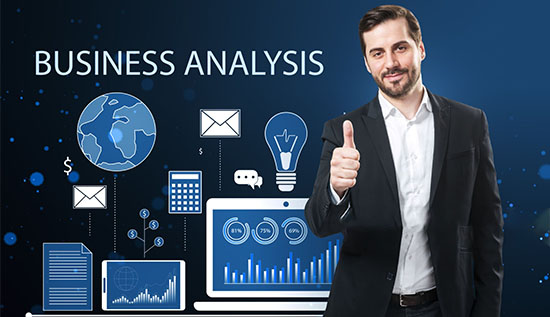How Supercomputers and AI Drive the Future of Innovation

Discover how supercomputers and AI are revolutionizing industries, enhancing research, and driving groundbreaking technological advancements.
The fusion of supercomputers and AI has transformed multiple industries, from healthcare to finance, by enabling faster data processing, accurate predictions and innovative solution. Artificial intelligence's powers rise hitherto unheard-of as processing capacity expand exponentially. The vital part supercomputers and AI play in changing the planet is discussed in this article.
The Evolution of AI-Driven Scientific Research
AI-driven scientific research has progressed rapidly, thanks to supercomputers and AI. AI-powered algorithms are used by scientists to replicate intricate natural events, project patterns of climate change and hasten drug development. These strong machines allow academics to examine vast amounts of data with amazing speed, therefore releasing hitherto impossible discoveries.
AI models educated on large biological datasets can forecast disease outbreaks and suggest individualized treatments in medical research. In astrophysics, too, artificial intelligence-enhanced simulations support black hole research and cosmic evolution understanding. Such scientific discoveries would wait decades without supercomputers and AI.
The Process of AI-Powered Data in High-Performance Computing
Traditional computer techniques find it difficult to meet the needs of real-time processing while data generation keeps constantly increasing. Combining high-performance computing (HPC) with artificial intelligence-powered data processing is transforming industry analysis of enormous volumes of data. Using AI-driven models helps companies to gain insightful analysis, streamline processes and make quick, fact-based decisions.
Key Points:
- Data's explosive expansion calls for efficient processing driven by artificial intelligence.
- Supercomputers and artificial intelligence cooperate to real-time analyze enormous amounts of data.
- Unlike conventional techniques, artificial intelligence models rapidly spot trends, therefore facilitating speedier decision-making.
Key industries benefiting include:
- Cybersecurity
- Detecting threats proactively.
- Financial Markets
- Analyzing trends for smarter investments.
- Autonomous Systems
- Enhancing real-time decision-making.
AI-powered supercomputing is transforming sectors such as:
- E-commerce
- Predicting customer behavior and optimizing supply chains.
High-performance computing and artificial intelligence together let companies process data at before unheard-of rates.
GPU vs. Supercomputers for AI: Which One Wins?
The debate of GPU vs. supercomputers for AI has gained traction in recent years. While GPUs are widely used for AI training due to their parallel processing capabilities, supercomputers and AI together deliver unparalleled computational power for advanced simulations and deep learning.
GPUs shine in managing machine learning chores but sometimes struggle with ultra-large datasets. Conversely, supercomputers and AI cooperate to run massive AI projects including high-resolution image processing, chemical simulations, and climate modeling. Supercomputing capability combined with artificial intelligence guarantees effective solution of challenging problems.
The Role of Quantum Computing in AI Advancements
The role of quantum computing in AI is a game-changer, as quantum computers have the potential to surpass the processing power of classical supercomputers. Integrating supercomputers and AI with quantum computing can revolutionize cryptography, drug discovery, and optimization problems.
Unlike traditional computing technique, quantum computing processes several computations concurrently, hence improving AI's problem-solving capacity. Although yet in their infancy, the combination of supercomputers and AI with quantum technology might provide answer to some of the toughest issues facing the planet.
The Impact of Supercomputers on AI Research
The impact of supercomputers on AI research cannot be overstated. These machines empower researchers with computational resources to test complex AI models and refine deep learning algorithms. From self-driving cars to natural language processing, supercomputers and AI enable real-time advancements that shape the future.
One notable example is in the development of generative AI model, where AI breakthroughs with high-performance computing have produced realistic image and text production. To run effectively and provide real-time responses, artificial intelligence-powered chatbots also speech recognition systems and autonomous robot depend on high-performance computing.
AI Supercomputing Case Studies: Transforming Industries
Several AI supercomputing case studies highlight how industries leverage supercomputers and AI to drive innovation. In the pharmaceutical sector, AI-driven models run on supercomputers to accelerate drug discovery, significantly reducing the time required for clinical trials.
Another example is in the automotive industry, where AI-powered simulations improve vehicle safety and optimize traffic flow. The combination of supercomputers and AI ensures that autonomous driving technologies continue to evolve with greater precision and efficiency.
How Supercomputers Improve Artificial Intelligence Research
A key question in technological advancement is how supercomputers improve artificial intelligence research. High-performance computing allows AI models to train on extensive datasets, improving their accuracy and efficiency. Whether in robotics, language processing or climate modeling, supercomputers and AI play a crucial role in refining AI application.
High-performance computing allows artificial intelligence researchers to create simulation more precisely that reflect real-world situation. Supercomputers are essential for the fast development of AI-driven solution just because of their sheer processing capability.
Why AI Research Needs High-Performance Computing
Understanding why AI research needs high-performance computing is vital for appreciating the full potential of supercomputers and AI. Traditional computing systems cannot handle the vast datasets and complex algorithms required for AI applications. High-performance computing ensures that AI models are trained efficiently, reducing processing time from years to weeks.
From climate forecasting to genome sequencing, AI research depends on computational power. The fusion of supercomputers and AI guarantees that industries and researchers can push the boundaries of innovation without computational limitations.
Conclusion
The integration of supercomputers and AI is transforming industries, revolutionizing scientific research, and driving AI innovations at an unprecedented scale. From quantum computing developments to data processing driven by artificial intelligence, these technologies keep stretching the envelope of what is feasible. Supercomputers and AI will remain at the forefront of technical development as computational capability change. therefore influencing the course of humanity.
Frequently Asked Questions
1. How do supercomputers enhance AI research?
Supercomputers provide faster model training and data processing by so offering great computational capability, so accelerating AI research.
2. What industries benefit the most from AI and supercomputers?
Supercomputing driven by artificial intelligence benefits sectors including healthcare, finance, cybersecurity and automotive technologies greatly.
3. Can GPUs replace supercomputers for AI applications?
While GPUs are effective for AI tasks, supercomputers offer superior processing capabilities for large-scale AI applications.
4. What is the role of quantum computing in AI development?
Quantum computing enhances AI’s ability to solve complex problems by processing multiple computations simultaneously.
5. How does AI-powered data processing improve decision-making?
AI-powered data processing allows businesses to analyze vast datasets in real-time, leading to smarter and faster decision-making.
6. Why is high-performance computing crucial for AI research?
AI research requires extensive computational power, which high-performance computing provides for training and running AI models efficiently.
7. What are some real-world examples of AI supercomputing applications?
AI supercomputing is used in drug discovery, climate modeling, autonomous vehicles, and large-scale language processing applications.
More Articles
 06 Dec 2025
06 Dec 2025
AI Chatbots for Customer Support & Virtual Assistants
Boost customer satisfaction with intelligent AI chatbots for customer support. Deliver instant responses, automate service tasks, and scale your support team 24/7 with smart virtual assistants.
 06 Dec 2025
06 Dec 2025
Custom Apps vs Ready-Made Software: Key Benefits
See how custom apps vs ready-made software impact productivity, integration and flexibility for businesses of all sizes.
 05 Dec 2025
05 Dec 2025
eWallet and Online Transaction Security in Cambodia
Stay protected with essential insights on eWallet and online transaction security in Cambodia, covering key risks, safety practices, and fraud prevention tips.
 04 Dec 2025
04 Dec 2025
Apply for Senior Business Analyst – Loma Technology
Detailed resource explaining the Senior Business Analyst Loma Technology role, ideal for candidates seeking clarity on expectations and recruitment stages.